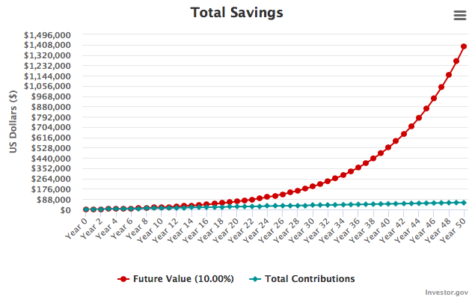Think Before You Buy: The Impact of Fast Fashion
You might want to think twice before you go all out on a shopping spree or spend your mom’s latest paycheck at Urban Outfitters. Turns out, participating in retail culture can have devastating effects on the environment.
In the wake of the recent climate protests and growing concerns over warming global temperatures, many are reevaluating choices in their own lives that have a drastic impact on the planet. People are now focusing their attention toward the fashion industry, specifically fast fashion, which is proving to be extremely detrimental towards the environment’s health.
Fast fashion, a relatively new business model that came with the rise of stores like H&M and Zara, has some of the worst negative impacts on the environment relative to other industries. Their business model runs on selling low priced items in high volumes, and in order to provide so many cheap options at such a rapid pace, many fast fashion businesses cut environmental corners and regulations. In addition, many brands base their production in Eastern Asian countries, which have few regulations, leaving little consideration towards its environmental impact.
So what’s the damage? The fashion industry is the second biggest polluter industry, after oil. In most countries where the garments are produced, toxic wastewater and chemicals used to dye clothes are dumped directly into water systems. Often, wastewater contains substances such as lead and mercury, which is incredibly harmful to humans and ecosystems. In addition, many of the materials used have negative impacts. Polyester, the most popular fabric used for its cheapness and versatility, is made from synthetic petroleum, which is made from a non-renewable, carbon-intensive source. In fact, over 70 million barrels of oil are needed to produce the polyester that is consumed each year. Most polyester clothes are thin and are short-lived to cut costs, causing many to begin to fall apart in the wash. The breakdown of these fabrics is the largest source of microplastic pollution in the ocean as polyester sheds plastic fibers each time it’s washed. The microfibers impact the ecosystem, as plankton consume them and impact the rest of the ecosystem. Even cotton has its downfalls. Pesticides that are used to kill insects and yield a greater crop in the production of cotton run off into the water and harm the environment.
It’s not only the production of fast fashion that damages the environment; it’s also the consumption of clothes. The fast fashion model of business only works because of how often people buy clothes. According to World Resources Institute, the average consumer bought 60 percent more clothes in 2014 than they did in 2000, despite keeping the clothes for half as long. There’s an increasing desire to switch up one’s wardrobe every month or even every week as opposed to every season or year. This demand fuels the fashion industry, providing them a clientele base that desires new clothes constantly. The resources needed to make all of these clothes is extremely draining on the Earth. Making a pair of jeans produces as many greenhouse gases as driving a car for more than 80 miles, and the production of one cotton shirt takes 2,700 liters of water.
All that consumption results in an abundance of clothing waste. One garbage truck full of clothes is sent to a landfill or burned every second. This adds up to 82,782,000,000 kilograms of clothing waste every year, which is likely to take over 1,000 years to break down.
The conclusion? Constant consumption of retail clothing is incredibly devastating towards the environment. So what can you do? Resist the constant urge to buy new clothes for every new occasion. When you do buy new clothes, try to buy high quality clothes that will last the longest. The general rule of thumb is that if you place your hand under the fabric and can still see it, it’s too thin and of poor quality. By reducing our constant consumption of clothes, we can slowly work to reduce the environmental impact.


